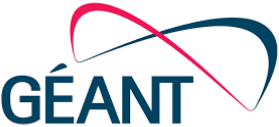Fiber for Wholesale: not in the Dark for Much Longer
Trusted by:


















The future is fiber. Whether lit or unlit, fiber represents many opportunities in the wholesale market—especially as demand for fiber optic broadband, FTTH, and smart telecom network inventory management continues to surge. But what sort of new use cases are driving the fiber market boom and what sort of challenges do wholesalers need to be prepared to meet?
In the fiber market, everything is trending in the right direction: up
Perhaps unsurprisingly given the appetite for broadband services, fiber networks are exploding globally. According to the FTTH Council, forecasts suggest that in the EU and UK alone, around 199 million homes will be passed (for FTTH/B) by 2027, enabling service delivery to 309 million homes. In the three largest European countries, homes passed are projected to reach 31.1 million in France, 30.1 million in the United Kingdom and 26.0 million in Germany.
Further, the number of broadband subscribers is expected to reach 190 million in the EU39 region in the same period. This reflects a take-up rate (calculated by the number of subscribers against homes passed) expected to reach 61.4%. Together, these numbers underline both the ongoing digital transformation in the region, as well as pointing to the important role of fiber in digital inclusion.
The numbers also imply that there is dark (unlit) fiber at the ready, as well as lit fiber in place that can be extended to homes. Considering this demand for broadband services, that’s significant. In fact, the global dark fiber market size is projected to reach USD 8.7 billion by 2026 from an estimated USD 5.2 billion in 2021, at a CAGR of 11.0% from 2021 to 2026.
What’s driving the growth?
Growing demand for reliable and secure networks and increasing appetite for internet bandwidth are among the factors that go hand-in-hand and are driving the appetite for fiber, in particular demand from the manufacturing and logistics sectors due to the dependence of their operations and services on high-speed bandwidth.
Here, heavy data loads are common (for instance related to the number of products manufactured, raw materials received, storage containers in the warehouse, etc.) and dark fiber delivers the scalability, particularly during times of rapid commercial expansion, that are required to meet service demand. Plus, unlimited bandwidth without additional monthly fees or service delays, network latency, reliability, and low long-term cost add to the appeal of the dark fiber approach.
And there’s also a security advantage. Dark fibers are highly secure as the network itself is privately owned and operated by the lease owner. When lit, no other outside entities can track or record the data and information being transmitted through the fiber. This level of security is crucial for all businesses who have the need to transmit sensitive data over a secure network on a constant basis.
From the wholesaler’s perspective
With all this in mind, there’s clearly a significant wholesale opportunity in which, for now, dark fiber represents a latent (or at least unlit) resource ready to be tapped. It’s critically important and as a result, wholesale fiber operators positioned to take advantage are playing an increasingly influential role in the telecoms industry, providing infrastructure for use by third parties seeking to meet the aforementioned exponentially increasing demand for bandwidth. These players include:
- ISPs
- Other direct to user fiber providers
- Mobile operators
Proof comes in the form of wholesale-only business models which are presently expanding across Europe. Wholesale was first pursued to deploy FTTH in the late 1990s but over the last half a decade there has been a resurgence in the business. Examples of the new breed of wholesaler are numerous and include utility-backed new entrants such as Open Fiber in Italy, SIRO in Ireland and Fluvius in Belgium. Wholesale is also playing an important role in the deployment of fiber itself in countries such as France, Portugal, Spain and Switzerland which had mostly previously relied on infrastructure-based competition and co-investment.
Wholesale Fiber Use Cases
A growing variety of innovative use cases cement and underline the wholesale market’s positive direction of travel. According to one recent report, these include:
- Fiber to provide connectivity for traffic lights, video surveillance and street lighting, as well as to increase the speed and effectiveness of repairs. For example, in Bari in Italy, a total of 15.000 lights will be connected to the network.
- The same research also cites examples from Turin, for a ‘Smart Road’ project, in which traffic detection systems, cameras, digital signs, and so on will be connected via 5G – and fiber.
- Similarly, healthcare – with trials in Sardinia of remote video connections from rural areas to specialists.
- Finally, among a host of other use cases for smart cities, the report also highlights monitoring buildings for the purposes of early detection of tremors that may indicate an imminent earthquake – a mission critical application if ever there was one and for which fiber is a clear requirement given the need to avoid delays!
What’s interesting here and, in terms of market development is also notable, is that these use cases go way beyond basic connectivity and encompass a wide range of applications and stakeholders likely to only grow in importance (reflecting increasing demand) as the market matures. All of which, of course, will depend on fiber. And, while the report focused on Italy, the same or similar use cases will be applicable in almost any country. Wholesale and neutral fiber networks will be key enablers.
The challenge
But if the wholesale opportunity is attractive, wholesale fiber presents a challenge. That’s because wholesale (and neutral) providers must manage an array of new and often complex relationships and in the process understand not only their networks but also the services delivered across them by their partners (because the wholesaler itself doesn’t offer services to the end client) if they want to achieve commercial success.
One aspect of the challenge they face is purely technical, for instance how to integrate a fiber segment to the base platform in the most efficient way so that it can pass a large amount of (often sensitive) data securely. But another aspect is, as noted, “managerial”, because wholesale fiber without a truly accurate, up-to-date picture of the entire inventory and infrastructure isn’t likely to be an effective business model or deliver what end-customers need.
For that, at a minimum, wholesalers will require:
- End to end connectivity cross (network) platform, from fiber to services
- Quick impact assessment
- Telephone number management
- IP management
- Seamless integration to CRM and service fulfilment
This reflects the reality that wholesalers have many complex (and new) relationships to understand, plan for, and deliver when fiber is activated or required. They need the agility and oversight required to meet the dynamic demands of a rapidly evolving market. Advanced telecom inventory management solutions can help streamline the planning, design process and delivery of fiber by providing real‑time, consolidated visibility into network assets.
Wholesale fiber and Network Inventory Management
Meeting the challenge outlined here is most effectively done through a comprehensive Network Inventory Management platform. The leading example is the Service2Create (S2C) platform, which delivers the functional advantages required by wholesalers through the deployment of a rigorous set process. S2C collects raw data from data from multiple endpoints in the network, normalizes, and then reconciles it.
As a result, S2C delivers the critical, panoramic view all physical and logical resources in the fiber network giving the operator a clear, unified understanding of live network assets and their utilization and configuration at any given time. The platform can also be integrated into the network itself to perform auto-provisioning (service fulfilment) which facilitates building and rolling out services in the network – and complex wholesale operations, for any use case, today or in the future.
Discover the Future of Wholesale Fiber
Ready to unlock the full potential of your fiber network? Learn how our advanced telecom inventory management solution, Service2Create (S2C), can streamline your operations and drive growth. Request a demo or Contact us today. We would love to help!



